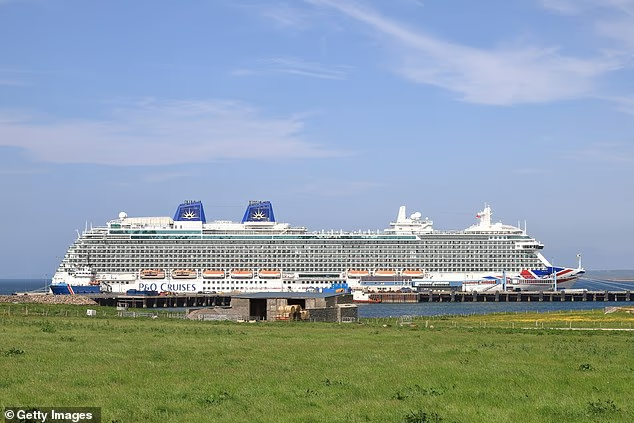A proposal to introduce a £5 visitor entry fee across several of Scotland’s most scenic islands has sparked heated debate among residents, local councils, and tourism operators. The plan, which aims to tackle the growing problem of overtourism, would apply to select destinations in the Hebrides, Orkney, and Shetland, where the seasonal influx of visitors is said to be straining infrastructure, disrupting daily life, and threatening fragile ecosystems.
The measure, currently under consultation by regional authorities, would make Scotland one of the first parts of the UK to formally adopt a tourism levy at entry points to remote islands. While local leaders insist that the move is necessary to protect the environment and maintain public services, some business owners fear the fee could discourage visitors and harm local economies that rely heavily on tourism revenue.
Rising Visitor Numbers and Strained Resources
Over the past decade, Scotland’s islands have experienced a dramatic rise in visitor numbers. Fuelled by global exposure from television shows like Outlander, viral social media posts showcasing rugged coastlines, and the growing popularity of eco-tourism, small communities that once saw a few hundred tourists a week now welcome thousands.
The Isle of Skye, for example, hosted nearly 800,000 visitors in 2024 — a figure more than 20 times its resident population. Similar patterns have been seen in the Outer Hebrides, where narrow single-track roads and limited waste disposal systems struggle to cope with camper vans and tour buses during peak months.
Local councils report that the surge has driven up maintenance costs, with road repairs, public toilet cleaning, and waste management expenses all increasing sharply. “We love welcoming visitors,” said Councillor Fiona MacLeod of the Western Isles Council, “but the balance has tipped. Our communities are under real pressure, and we need sustainable solutions.”
The Proposed £5 Levy
The idea under consideration is simple: every non-resident arriving by ferry or small aircraft would pay a £5 entry fee, either included in the ticket price or paid upon arrival. The funds would be directed to a community-managed trust, which would invest in infrastructure upgrades, environmental protection projects, and local amenities.
Proponents of the scheme argue that the fee is modest — far less than the daily tourist taxes already common in parts of Europe. “If a small charge can help preserve these unique landscapes, it’s a price worth paying,” said Angus Morrison, a tourism policy adviser for VisitScotland. “It’s about ensuring these destinations remain welcoming and vibrant for generations to come.”
Mixed Reaction from Locals and Businesses
While many residents support the initiative, fearing that unchecked tourism could erode the character of their islands, others remain skeptical. Some local business owners — especially those running guesthouses, cafes, and tour operations — worry that the introduction of a levy could create negative publicity and drive tourists elsewhere.
“I understand the reasoning, but £5 could quickly become £10 or more,” said Sarah Donnelly, who runs a small bed-and-breakfast on Skye. “If visitors feel nickel-and-dimed, they might choose to go to the Lake District or Wales instead.”
Still, a recent community survey on Skye showed that nearly 70% of residents back the concept of a visitor contribution, provided that the money is transparently managed and reinvested locally.
A Broader Debate Over Sustainable Tourism
The proposed fee comes amid a wider conversation across Europe about the sustainability of tourism in rural and ecologically sensitive regions. Cities such as Venice and Dubrovnik have already introduced entry charges or restricted visitor numbers to combat crowding and protect cultural sites.
Experts believe Scotland’s islands could become a model for balancing tourism with conservation. “We have to rethink what responsible tourism looks like,” said Dr. Eilidh MacPherson, an environmental economist at the University of Glasgow. “These are not amusement parks — they are living communities. Without better management, we risk loving them to death.”
Environmental groups have welcomed the move, noting that increased foot traffic can lead to erosion, litter, and disturbance of wildlife habitats. The Royal Society for the Protection of Birds (RSPB) warned earlier this year that seabird populations on some islands have declined by up to 40% in the last decade, partly due to human intrusion during breeding seasons.
How the Fee Would Work
Under the current proposal, visitors would pay the £5 fee electronically when booking ferry or air tickets. The payment system would automatically direct funds to a regional tourism trust governed by a mix of local representatives, environmental organizations, and community leaders.
The trust would then allocate funds toward projects such as expanding car parks, improving public toilets, maintaining walking trails, and developing waste management systems. A portion of the funds could also be used to subsidize ferry fares for residents — an idea that has gained traction among island councils as a fairness measure.
Tourism Industry Voices Caution
The Scottish Tourism Alliance (STA) has urged the government to proceed carefully, warning that poorly designed levies could backfire. “We must avoid any perception that Scotland is unwelcoming,” said STA Chief Executive Marc Crothall. “The industry is still recovering from economic shocks, and small businesses are particularly vulnerable. Any visitor levy should be simple, transparent, and fair.”
To that end, the Scottish Government has indicated that no policy will be implemented without extensive consultation and local approval. Officials have stressed that the £5 figure is provisional and that pilot programs could be launched in 2026 before any national rollout.
Environmental and Economic Imperatives Collide
The debate has exposed the delicate balance between protecting the environment and supporting livelihoods. For residents like Angus MacDonald of Harris, who has lived on the island his entire life, the issue is deeply personal. “We want people to experience our home,” he said, “but not at the cost of destroying what makes it special. A small fee is a small price for respect.”
Some economists argue that the fee could actually boost tourism by enhancing facilities and improving visitor experiences. Cleaner beaches, better signage, and maintained trails could lead to more satisfied travellers who stay longer and spend more. “It’s an investment in the visitor economy,” said Dr. MacPherson. “Sustainability doesn’t mean fewer tourists — it means smarter tourism.”
Next Steps
The consultation period will run through early 2026, with findings expected by the summer. If approved, the levy could be introduced on a trial basis across selected islands before expanding to others.
For now, the debate continues to divide opinion across Scotland. But amid rising visitor numbers and mounting infrastructure costs, one thing is clear: the challenge of preserving the wild beauty of Scotland’s islands has never been more urgent.
Whether through a £5 entry fee or other creative solutions, communities are determined to find a balance — protecting both their environment and their way of life.



